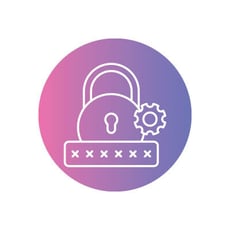The phrase "SIP Trunking" or "SIP Trunks", is increasingly common in the world of telecom. However if you are reading this, you are probably not in the telecom business but would like to know more.
What is SIP?
To understand “SIP Trunk”, you first need understand "SIP". Over the past few years, the telecommunications industry has standardized on SIP as the protocol of choice for phone calls on the data network. SIP, which stands for “Session Initiation Protocol”, is the technology used for establishing a voice communication session on a data network (for example over the Internet). A SIP “session” might be a regular VoIP phone call between two participants, or a multi-party conference call.
What Is SIP Trunking?
SIP Providers - Now that you better understand SIP, we can move on to the term “SIP Trunk”. A SIP Trunk provides the same service you get from a traditional analog phone line. The difference is, instead of being a physical wire, a SIP Trunk is a “virtual” phone line which is provided by a SIP trunk provider (Teledynamic is one of these providers). They use your data circuit (T1, Cable Modem, DSL, Ethernet over Copper, etc) to connect your phone system back to their network.
Why Convert To SIP Trunking? - Because there are no physical lines that need to be maintained with a SIP Trunk, and because of the lower price structure of VoIP, a SIP Trunk is considerably less expensive than traditional telephone service. Depending upon the types of calls, and quantity of calls you are making, SIP Trunking can save you up to 50% and more on your monthly bill. Another reason to consider SIP trunking is that it can provide DID and caller ID services.
How many SIP Trunks do you need? - The number of SIP Trunks is determined by a few factors. First, how many concurrent calls does your business need? As a typical rule of thumb, you'll need approximately one SIP trunk for each 2-3 users. Secondly, your Internet connection is an important consideration. SIP Trunks consume bandwidth. Depending upon the quantity of phone calls and need for data bandwidth, you may have to expand your data circuit. On the other hand, we've seen many instances where SIP trunks "rode for free" as the customer had plenty of bandwidth available.
How much is this going to cost me? - SIP trunk pricing varies from provider to provider. Some providers bill for SIP Trunks in a similar manner to how traditional analog lines are billed with a fee per trunk and cost per minute. Other providers charge a flat fee per SIP trunk, with unlimited usage.
Who offers SIP Trunking services? - There are as many choices in SIP trunking as there are in traditional telecom. Ferrum Technology Services is a leading SIP trunk provider and we have the added advantage of providing local service nationwide. Contact us and we'll be glad to see just how much money we can save you.
Fixing open NTP servers is important; with the 400x+ amplification factor of NTP DRDoS attacks — one 40-byte-long request usually generates 18252 bytes worth of response traffic — it only takes one machine on an unfiltered 1 Gbps link to create a 450+ Gbps attack!



